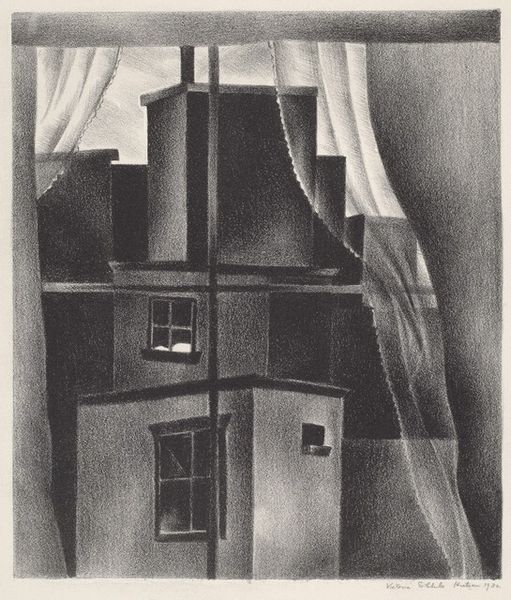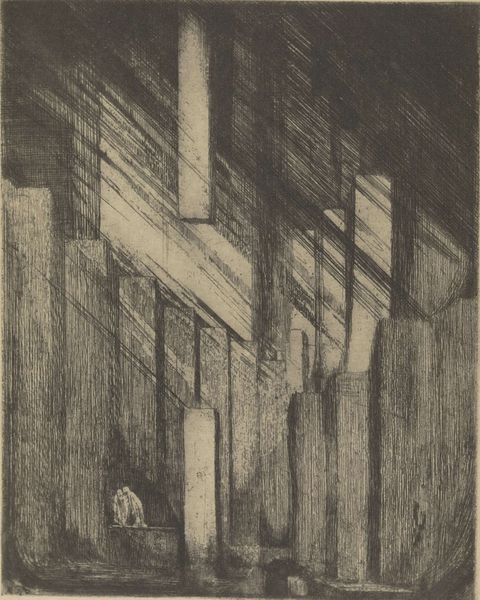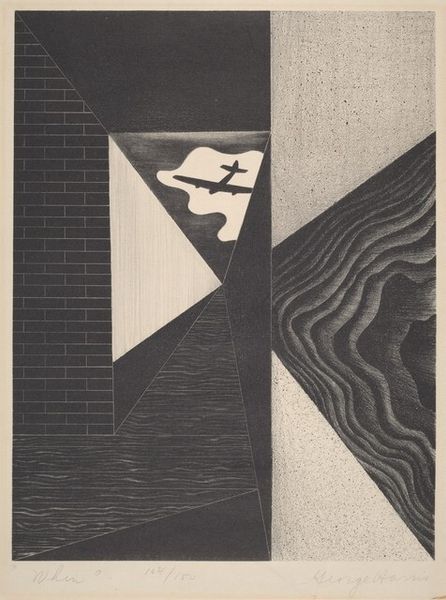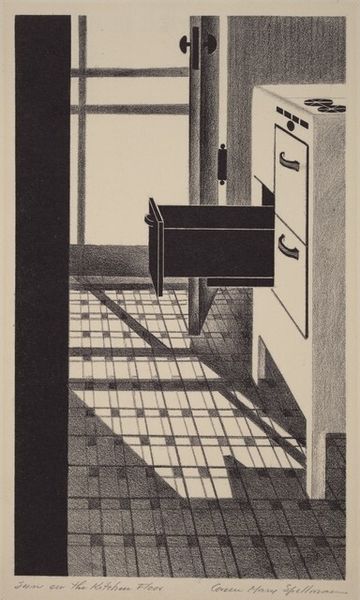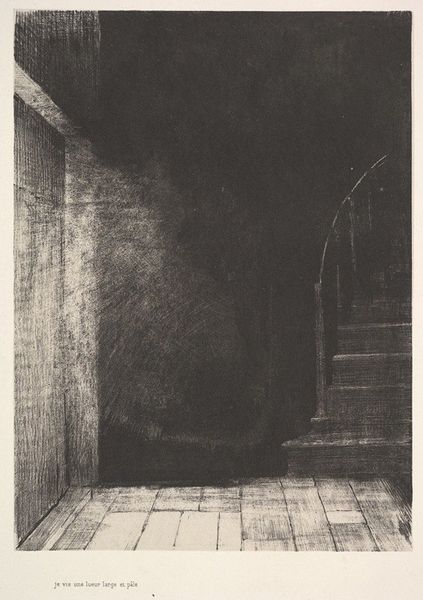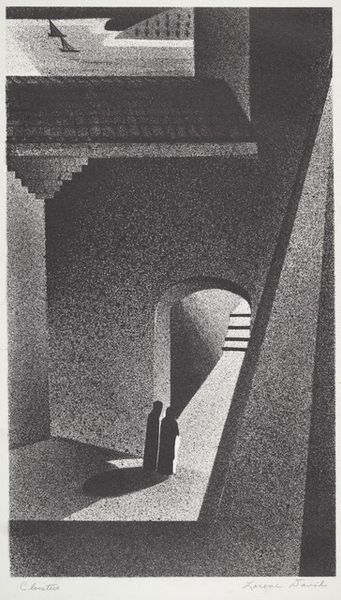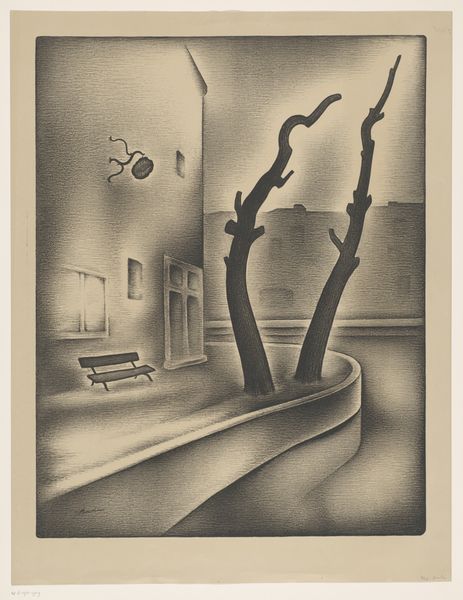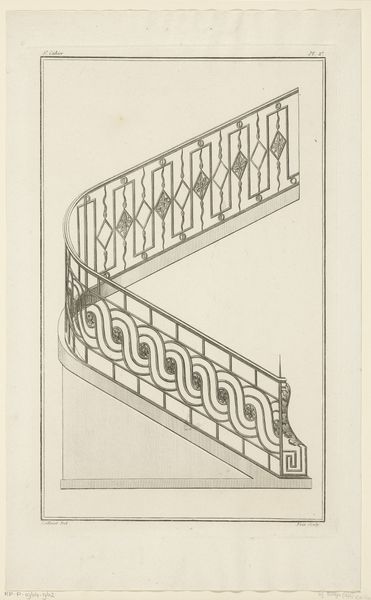
drawing, print, etching
#
drawing
# print
#
etching
#
landscape
#
perspective
#
figuration
#
geometric
#
line
#
modernism
Dimensions: height 280 mm, width 198 mm
Copyright: Rijks Museum: Open Domain
Editor: This etching by Arend Hendriks, called "Trap," made sometime between 1911 and 1943, depicts a dark staircase with, what I think are, glowing eyes at the top of the stairs. The deep shadows definitely create a sense of unease. What do you see in this piece? Curator: I see a potent commentary on spatial confinement and psychological unease, which, considering the era, could speak volumes about the interwar period and the rise of totalitarian regimes. Look at how the geometric rigidity of the stairs contrasts with the organic curve of the railing, creating a visual dissonance, and how that tension creates meaning. Who is being trapped, and by what? Is it physical, or societal expectations and constraints? Editor: That's interesting, I was just thinking it was kind of creepy! Are you saying it might be a metaphor? Curator: Art often operates on multiple levels, inviting viewers to consider both the immediate sensory experience and its underlying sociopolitical contexts. Hendriks might be using this claustrophobic space to mirror the oppressive atmosphere that many Europeans experienced. Does that reading shift how you understand the work? Editor: It does. I was stuck on the literal image, but considering the historical context adds a whole new layer. It's like the "trap" is society itself. Curator: Exactly. The stark contrast of light and shadow, almost a stage lighting effect, can represent the stark choices individuals faced during that time—conformity or resistance, visibility or obscurity. Think about who might be lurking in the shadows, watching. Does it feel predatory? Editor: Definitely predatory. Seeing those eyes now, it feels like being watched, scrutinized, like there's no escape. I appreciate you making me see it differently. Curator: And I appreciate your openness. It's through this kind of engaged dialogue that we can excavate the hidden depths within these seemingly simple images and understand them in all of their cultural nuance.
Comments
No comments
Be the first to comment and join the conversation on the ultimate creative platform.



